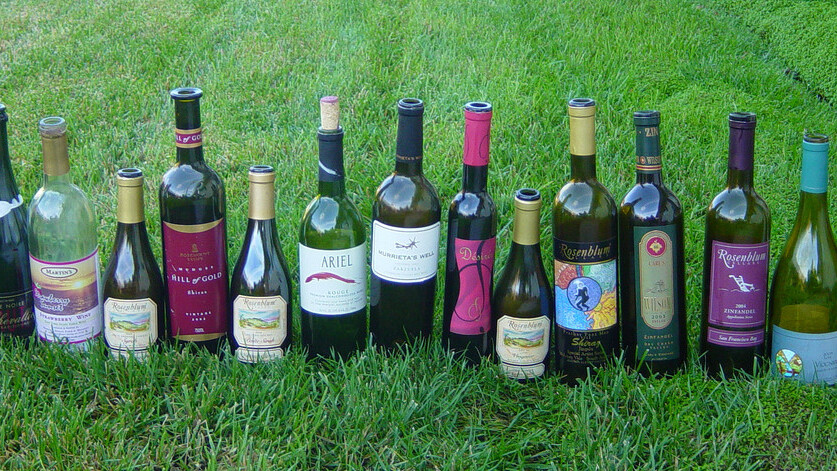
To begin the history of wine online, we must start at the tail end of The Prohibition era, one of the worst times in American history. Prohibition ended with the ratification of the Twenty-first Amendment, which repealed the Eighteenth Amendment, on December 5, 1933. Shortly thereafter the 3-tiered wine system was introduced, which mandated that an Importer, a Distributor and a Retailer were necessary steps to purchasing wine online. The system, which increases the cost per bottle for you and me was created over 80 years ago and has remained unchanged ever since.
The wine industry is both beautiful and twisted, much like the grape plant itself. Did you know that just like Prada purses, there’s an entire industry of fake wine sold in used bottles? Or that the Beer and Wine Wholesalers are the 2nd largest lobbyist group in the United States?
I love everything about wine but buying it can be intimidating. So, I recently signed up for a SideTour experience to spend an evening learning how to buy wine with Wine Expert Lyle Fass. Fass is a personal wine buyer in New York City who doesn’t take clients who spend any less than $1 million dollars a year on wine. While most people can’t afford to buy that quantity of wine, the SideTour experience cost $70 and was well worth it.
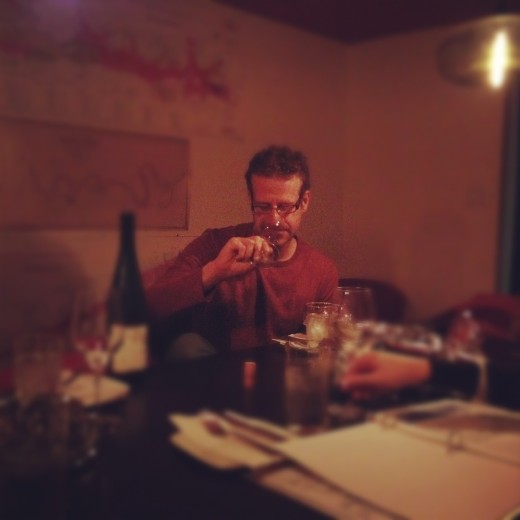
First, he told us to check the back of a bottle and look for the label of the import company. Fass recommends the following importers: Louis/Dressner (organic and sustainable); Fruit of the Vine (local to New York); Kermit Lynch (California); and the “absolutely brilliant” Mosel Wine Merchant (Germany).
One of the highlights of the evening was drinking a wine called “Lacryma Christi”, a red wine that actually tastes like a white and is produced in the Enodelta region of Italy. The evening ended in the cozy basement of Terroir Tribeca with a bottle of Riesling. As we parted, he recommend Moscato D’Asti as a wonderful wine that doubles as a hangover cure. But not everyone has a Lyle Fass to help them buy wine–and most people can’t afford a Lyle Fass. So where do you turn?
The Internet of course! SideTour was a terrific way to gain access to Fass and his wine expertise, but let’s take a look at how the World Wide Web is disrupting the wine industry.
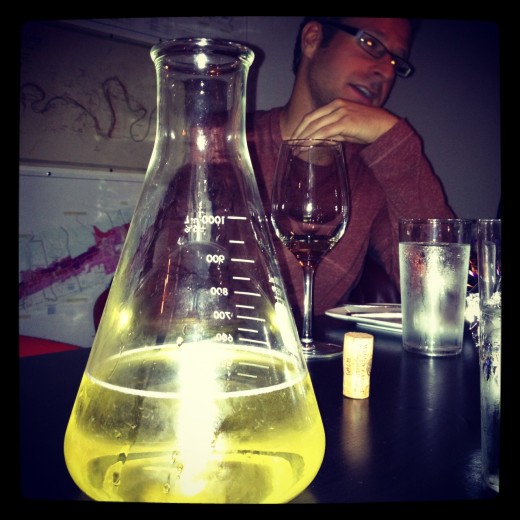
Your Guide to Buying Wine Online
Consumers don’t automatically turn to the Internet when they want to buy wine. First, there’s a lack of trust as the word “value” can mean a lot of things to many people. Second, wine can be a very personal preference so it’s hard to trust the opinions of others online. Lastly, there are very complicated laws prohibiting the shipping of wine between states, many of which date back to prohibition times. During the dot-com era, several wine e-commerce startups tried and failed. But the idea of buying wine online is so appealing: Ordering entire cases of high quality wine at great values and having them shipped right to your door shouldn’t be such a difficult task.
In the U.S., the consumer wine industry (everything from grocery stores to online shops) accounts for $30-40 billion in annual revenue. In Europe, it’s $100 billion. But no one company has yet to stand up to the plate and own that online space. Amazon even tried to do it and failed.
But the times they are a-changin’. Online wine sales are up: VinQuest’s 2011 wine industry research report shows online wine sales increased 38% in 2010. The governing body for California’s wine industry released a seismic document recently. In it, they clearly defined how third parties could work with wineries to help them sell their wines. A lot of companies are going to be scrambling to rebuild their systems to be compliant, but the net outcome will be that a larger variety of wines will be available online.
Let’s take a look at the variety of e-mail blasts, discount sites, auction sites and traditional retailers selling wine online.
Wine in your inbox
“Email lists can provide great deals but more times than not you have to act quick or the wine is gone. But the values and gems you can get are unparalleled,” says Fass.
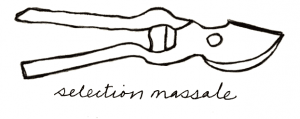 The inventor of this medium is Seattle’s Jon Rimmerman of GaragisteWine, who offers a multitude of wines to a huge list of 60,000 people. Fass says the next best email newsletter is Selection Massale, which is run by Guilhaume Gerard and Cory Cartwright. “I trust these guys immensely,” says Fass. “I ordered 5 cases this summer from them and am having a large tasting of around a dozen of the wines at my house soon. My spring shipment was fantastic; their emails are less fluff and their prices are killer, as are the French wines they import.”
The inventor of this medium is Seattle’s Jon Rimmerman of GaragisteWine, who offers a multitude of wines to a huge list of 60,000 people. Fass says the next best email newsletter is Selection Massale, which is run by Guilhaume Gerard and Cory Cartwright. “I trust these guys immensely,” says Fass. “I ordered 5 cases this summer from them and am having a large tasting of around a dozen of the wines at my house soon. My spring shipment was fantastic; their emails are less fluff and their prices are killer, as are the French wines they import.”
Fass also says that the deals from Premiercru list are great but you have to act quick. “Generally these e-mails have prices only available in the e-mail blast and its for a limited time. They also offer very high end wines but don’t let that scare you off. There are some astonishing values,” says Fass. With the aforementioned operations you receive emails, place orders and they only ship twice a year, usually April-May and October-November, when it is not too cold or hot.
Flash Sales, Discounts and Auction Sites
The biggest market force are “flash sale” sites like Gilt Taste and Lot18… Wineries that need to move product are able to do so very quickly and efficiently through these platforms – it’s a very different model than wine clubs with automatic shipments and little choice for consumers, or from behemoths like Wine.com.
-Bonnie Graves, Founder of Girl Meets Grape
Top Pick: Lot18
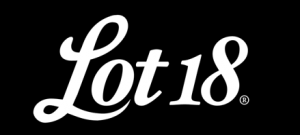 In November of this year, Lot18 announced its support for the aforementioned advisory in California regarding proper compliance for online wine sales facilitated by third-party marketers. Lot18, a members only, flash sales site, is cornering the market on the online wine industry not by actually selling or shipping wine, but acting as an elegant marketing platform for wine producers.
In November of this year, Lot18 announced its support for the aforementioned advisory in California regarding proper compliance for online wine sales facilitated by third-party marketers. Lot18, a members only, flash sales site, is cornering the market on the online wine industry not by actually selling or shipping wine, but acting as an elegant marketing platform for wine producers.
The New York City based startup gives its members access to small artisan wineries around the world who don’t have the money to spend on distribution and marketing. Lot18 acts like a middleman in that it sells wines through the site, but does not ship directly to consumers. For domestic wines, sales are processed through the winery direct to consumer. For imports, the wines go through an importation and distribution system managed by Lot18 and shipped to consumers through retail partners in each state.
To dominate the online wine business and expand into Europe, Lot18 raised $30 million this year. In just one year, the New York City startup has grown to 90 employees, poaching some of the finest wine connoisseurs the city has to offer. The company has already seen U.S. domestic sales of more than 700,000 bottles of wine and has a very long waiting list of wineries who want to sell on its platform. For those across the pond, Lot18 is bringing its online wine business to Europe’s $100 billion market, after acquiring Paris-based Vinobest earlier this month.
To test Lot18’s wine credibility, we interviewed Dini Rao, Lot18’s VP of Merchandise. In an office with more wine bottles than people, Lot18’s procurement team tastes every wine that ends up on its site. “We taste on average of 10 different wines in order to come up with one that’s acceptable,” says Rao.
“There’s almost no barrier to selling wine online. Anyone with a retail license can stick wines on a website. But there’s a problem when people sell low-quality wine that’s been made in excess supply. People will buy up a lot of excess wine, particularly from Europe and put a beautiful label on it to give it a great brand. Oftentimes on discount sites you’ll see rosé or white wines that are 5-6 years old. But those wines weren’t meant to age! Pay attention to the vintage. You want fresh, young white wines. A lot of discount sites are buying up bad wine that couldn’t be sold anywhere and they’re literally just trying to liquidate it,” warns Rao.
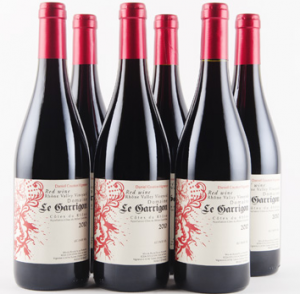 Rao grew up in agricultural Ohio, where she was a taste tester for her mother in their Indian household. “She’d make curry and I’d tell her, ‘You need more coriander, you didn’t toast the cumin, etc.'” When Rao was just 17, she traveled to upstate NY to visit colleges and fell in love with a winery. She knew from that day on that she’d work in the wine industry for the rest of her life. Rao comes to Lot18 after working at Christie’s Auction House as a wine specialist.
Rao grew up in agricultural Ohio, where she was a taste tester for her mother in their Indian household. “She’d make curry and I’d tell her, ‘You need more coriander, you didn’t toast the cumin, etc.'” When Rao was just 17, she traveled to upstate NY to visit colleges and fell in love with a winery. She knew from that day on that she’d work in the wine industry for the rest of her life. Rao comes to Lot18 after working at Christie’s Auction House as a wine specialist.
She tells me that most people online buy wine according to its ratings but that the problem with the number is that it’s based on just a few critics- namely a man named Robert Parker. “If you’re just listening to a number, you’re not necessarily finding wine you love but finding wine that somebody loves,” she says. “Thankfully, Lot18’s team of wine curators has a combined 150 years worth of wine industry experience and a diversity of taste.”
That century and a half of wine industry experience has helped Lot18 corner the market over the past year. For example, Rao has been close with Bart Araujo, one of the top 5 cult Californian wineries for the past 10 years. She tells me that 2007 was a phenomenal vintage for Cabernet in Napa Valley and that Bart Araujo made a fantastic wine for the first time that year called Altagracia 2. This year, they gave Lot18 the entire production.
With a beautiful website design and cherry-picked staff, consider the flash sales site your online sommelier (some-mull-yay). Lot18 offers go live in the morning at 7AM and most sales last 2-3 days. I recommend buying during “Wine Friday”, where between 1-5pm EDT, you’ll have access to a silly amount of limited time offers. This holiday season, Lot18 launched its Corporate Access program, which means Lot18 specialists will handle all of the logistics involved in choosing, shipping and wrapping gifts for your corporate clients. While Lot18 is members only, you can sign up for access through this link here.

You may also want to check out:
Every site under the Gilt umbrella including Gilt Groupe, Jetsetter, Gilt City, and Gilt Manual is simply stunning. Its newest family member, Gilt Taste offers gourmet meats, seafoods, cheese, sweets and of course wine online, including classics, cult wines, and some really fun table wines. Price points range from a $12 per bottles of summer rosé to the nearly-$500 Bryant Family 2008 Cabernet Sauvignon. Gilt’s classy editorial staff pairs each bottle with food and recipes like a Margaux Grand Cru (a juicy cab-merlot blend in party-ready magnum) with roasted lamb or a grassy sauvignon blanc with goat cheese.
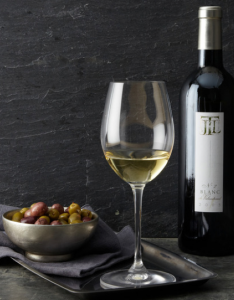 Naked Wine is a UK based wine retailer, with one unique difference, which is that the company invests over £10m a year into independent winemakers, in return for preferential prices, which they pass back to their customers. The idea is to create a virtuous circle: winemakers are profitable at lower prices, and can do what they love, and wine drinkers get better wine for less money. The company is just 2 years old but has already recruited over 100,000 new customers, and funded 22 winemakers.
Naked Wine is a UK based wine retailer, with one unique difference, which is that the company invests over £10m a year into independent winemakers, in return for preferential prices, which they pass back to their customers. The idea is to create a virtuous circle: winemakers are profitable at lower prices, and can do what they love, and wine drinkers get better wine for less money. The company is just 2 years old but has already recruited over 100,000 new customers, and funded 22 winemakers.
Cinderella Wine, which was founded in 2009 by social media pundit Gary Vaynerchuk, focuses on user interaction as it allows its customers to comment freely and leave their thoughts about different wines. Each weekday night at 9PM EST, Cinderella Wine features one discounted wine, which will vary from night to night. Once the limited quality has sold out, the sale is appropriately replaced with the graphic of a pumpkin. All orders are processed through its sister company, Wine Library.
The recently launched Vitis is another luxury flash sale site “that is devoted to selling fantastic wines, one at a time, at the guaranteed best online prices available”. Founder, Michael Grady says that each wine is chosen, tested and vetted by their expert tasting panel, which includes 2 Masters of Wine and a WSET Diploma holder. The site features ideal recipe and cheese pairing suggestions and points of interest for each wine, as well as an email list so you can stay in touch.
I recommend skipping:
Wine Til Sold Out is the online flash sales site for a brick and mortar retailer based in New Jersey. The site focuses on selling wine at 30%-70% off store and Internet site prices. While some TNW readers recommended WTSO for its fantastic prices, I can’t get over how terrible and classless the design is, and this is coming from someone whose favorite color is purple.

Also, Wine.Woot rubs me the wrong way. Anyone who first describes themselves as an “e-commerce dynamo” that also sells garment steamers isn’t someone you should buy wine from.
While Wine Expert Lyle Fass isn’t a fan of discount sites for valid reasons (If the wine is so good how come the supplier could not sell it?), he loves Winebid for its great design and many treasures. The site has new auctions every week and has particularly great values on older wines.
Retailers
While there are likely hundreds of online wine retailers, Fass recommends Crush Wine Co. and Chambers St. Wines, which he says are both chock full of good information. There’s also American Winery, a wine marketplace where winemakers can post their tasting notes and tips and wine drinkers can buy, rate, review and discuss wine. Launched in 2008, the Walla Walla, Washington based company has grown into a network of wine sellers. The company provides marketing support and services to American based wineries, facilitates sales transactions and assists with the tracking of wine orders.
I recommend skipping:
Industry giant, Wine.com, which has imploded and rebuilt itself several times in the last decade. And you can tell by the look of it. Wine.com should sell its domain name to the highest bidder and call it a day.

Wine in Social Media:
“Most wine blogs are static in my opinion and I don’t read them anymore. Yes, I write one. I don’t read that one either…I like Twitter for random wine conversations and I follow all the people’s opinions I respect and they will link to interesting stuff usually. Twitter and Facebook are by far where I converse the most about wine. It used to be my blog but they have been supplanted.”
-Lyle Fass
We’ll have more on wine’s place in social media, and the best wine apps around, coming to you in 2012. For now, just remember… life’s too short to drink bad wine and that bottles are best enjoyed when shared.
Fun facts and tips I learned about wine while writing this piece:
-Wines can’t age as well without the cork.
-Oxygen is wine’s friend but also its worst enemy.
-When you harvest late the wine is more sugary, which obfuscates the flavors of the land.
-You can hyperdecant wine in a blender.
-Italy has over 4,000 different grape varieties.
-Never buy Beaujolais wine from Georges Duboeuf
-Eric Asimov is the Chief Wine Critic for The New York Times. He’s also the nephew of the late author Isaac Asimov, who coined the phrase “robotics.”
-Older wines cause the worst hangovers.
-Moscato D’Asti is a hangover cure.
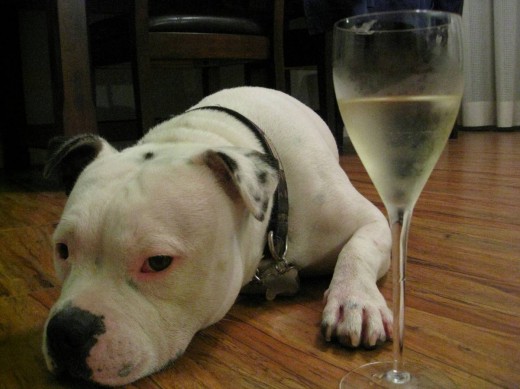
Get the TNW newsletter
Get the most important tech news in your inbox each week.




